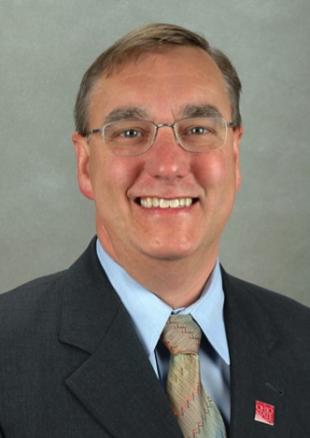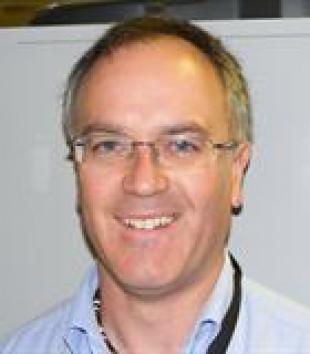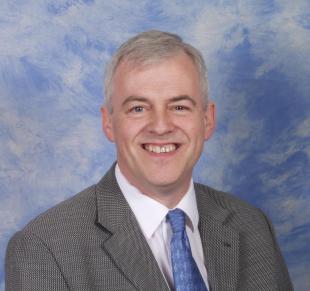Prof. Randolph Moses
Biography: Randolph L. Moses received the B.S., M.S., and Ph.D. degrees in Electrical Engineering from Virginia Tech 1979, 1980, and 1984, respectively. Since 1985 he has been on the faculty at The Ohio State University and is Professor in Electrical and Computer Engineering. He is also Associate Dean for Research in the College of Engineering. Professor Moses was a visiting researcher with the Air Force Research Laboratory (1983; 2002-03), Eindhoven University of Technology in The Netherlands (1984), Uppsala University in Sweden (1994-95) and Massachusetts Institute of Technology (2003). He is President of the ASEE Engineering Research Council and serves on the IEEE Sensors Council AdCom and the IEEE R&D Policy Committee. He is a past associate editor ofIEEE Transactions on Image Processing and of IEEE Transactions on Signal Processing. He is a Fellow of the IEEE. His research interests are in statistical signal processing and include parametric time series analysis, radar signal processing, sensor array processing, and sensor networks.
Sparse Methods for Radar Signal Processing - Abstract
Sean Ralph
Biography: Sean Ralph began his career with MOD in 1989 after graduating in Electronics and Microcomputer System at Dundee University. His early career was in Air Defence Systems but increasingly he became involved in projects aimed at the rapid introduction of technology drawing on his knowledge and experience of systems engineering, signal processing and RF engineering. Here he gained direct experience of the impact of S&T in the front line when he was deployed as a scientific adviser to UK forces in Iraq.
More recently Sean has taken on leadership and strategy roles as Chief Scientist for Electronics Department, then the MoD Counter Terrorism S&T Centre and then the Cyber and Influence Centre in Dstl. He has recently been appointed as Strategy Chief for Cyber and C4ISR in Dstl.
Signal Processing and Defence - Abstract
Industrial Session Speakers
Prof. Malcolm Macleod
Biography: Malcolm Macleod joined QinetiQ Malvern, where he is now Chief Scientist in the C4ISR Division, in November 2002 from the Engineering Department of Cambridge University where he was the Director of Research. He has worked in digital signal processing, image processing, inference and mathematical analysis for over 30 years. He has over 100 refereed journal and conference publications, 1 patent as sole inventor and 3 as joint inventor, with several applications pending. He has innovated algorithms that are highly efficient and practical, while providing performance that approaches the optimum achievable. When at Cambridge Consultants he developed algorithms and real-time implementations for a wide range of sensing, communications, radar, SAR, SONAR and magnetic sensing applications. His work on signal detection and estimation has been applied in commercial equipment such as Radio Receivers, Echo sounders and GPS receivers.
At QinetiQ Prof. Macleod worked in communications signal processing, ESM, GNSS, ultrasonic and laser-based sensing, inference and tracking, amongst other areas. He has developed novel algorithms and contributed to real time designs for these and many other applications, including sonar, ECM, and radar target simulators. Since January 2007 he has been a visiting Professor at the University of Strathclyde, and he serves on the organising committees of a number of EUSIPCO, IET and IMA conferences.
Dr. Andy Stove
Biography: Dr Andy Stove received a BA degree in Engineering Science in 1977 and a DPhil degree in 1981 for work on surface acoustic wave devices, both degrees being received from Oxford University. He then joined Philips Research Laboratories, working principally on the application of FMCW techniques to naval navigation radars and low-level air defence radars, on guided ammunition and on automotive radar. This work included the research which led to the development of the PILOT FMCW navigation radar. After a short period working on ways to enable computers to understand their users' mental states, he joined Racal Radar Defence Systems, now Thales Defence and Mission Systems Domain, in 1996. Since then he has worked on the system design and proving of the Searchwater 2000 family of Maritime Surveillance and AEW radars. He also led the development of the successful Doppler-based target classifier in the MSTAR Battlefield surveillance radar.
Dr. Stove has also worked on target discrimination for VHF radars and has continued to work on FMCW techniques, including their application to low cost phased array radars and further studies of their detectability. He has also worked on calibration techniques and systems concepts for advanced, low cost, phased array radars, on techniques for modelling the operation and performance of radar systems and on their use in multi-function and multi-static systems. He is co-Chairman of the NATO study group SET-184, which is looking at the applications of radar using random modulations. . Dr Stove is also a senior member of the IEEE and a fellow of the IET and was industry co-chair of the Technical Group of the UK's Radar Tower of Excellence.
Dr. David Nicholson
Biography: Dr. David Nicholson received a BSc degree in Physics in 1986 and a DPhil in 1990 for work in Observational Cosmology. He then took up a postdoctoral position in the Physics Department at the University of Cardiff, developing statistical signal processing methods for extracting weak gravitational wave signals from noisy detector data. This was followed by a move to BAE Systems Advanced Technology Centre, where he is currently an Executive Scientist in the Information Processing Capability. His work has focused on all aspects of data & information fusion, including: detection, classification, tracking, situation and threat assessment, and sensor management. In particular, he has worked closely with BAE Systems business units and university partners to ensure rapid transfer of relevant technologies. Specifically, he led the Technology Transfer work under the £5M Autonomous Learning in Decentralised Data and Information Networks (ALADDIN) programme, jointly funded by BAE Systems and EPSRC. This resulted in a number of technologies being exploited by BAE Systems and won and an Engineer Technology & Innovation Award in 2009. He has also led on two recent Dstl Centre for Defence Enterprise projects with academia, on the application of machine learning technologies for maritime anomaly detection and countering terrorist networks. He is the Knowledge Transfer Officer for the EPSRC’s ORCHID project on Human-Agent Collectives.
Dr Nicholson serves on the programme committee for the International Society of Information Fusion’s annual conference as well as SPIE’s Defence, Security, and Sensing track on Signal Processing, Sensor/Information Fusion, and Target Recognition.











